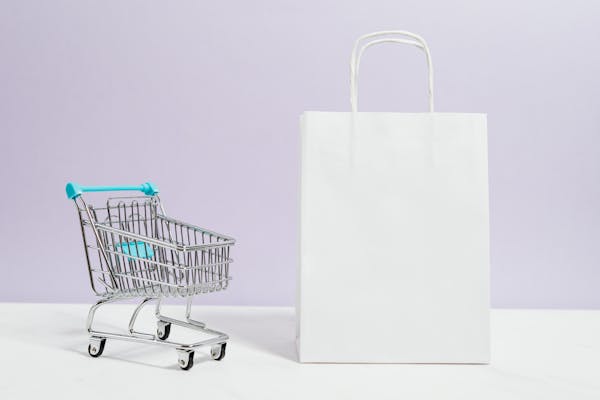
In a world packed with alluring sales, limited-time deals, and pleasure principle, welcoming a " no-buy " difficulty can feel both radical and revitalizing. Yet in 2025, this financial trend is gaining momentum not just as a short-term experiment yet as a long-term strategy for building mindful habits and real cost savings. Whether you're aiming to clear financial obligation, expand your reserve, or merely straighten with your economic objectives, the no-buy obstacle supplies greater than simply a break from costs. It uses quality.
What Is a No-Buy Challenge and Why Is It Trending?
A no-buy obstacle is specifically what it seems like: an individual commitment to quit buying non-essential things for a specific period of time. This can be as brief as a weekend break or as ambitious as an entire year. Individuals often limit acquisitions to fundamentals like groceries, rental fee, and transport, while saying no to takeout, on the internet shopping, brand-new clothing, and impulse purchases.
What makes the no-buy challenge specifically appropriate in 2025 is its countercultural energy. After years of rising cost of living, supply chain problems, and shifting financial confidence, customers are reassessing what's really worth their cash. People are not only looking to conserve they're wanting to repossess control.
Comprehending Your " Why " Before You Begin
Beginning a no-buy difficulty without intention resembles setting off on a journey without destination. You'll most likely stall. To prosper, you require a clear understanding of your motivation. Are you saving for a deposit? Attempting to eliminate financial debt? Wishing to construct better routines around cash?
Once you define your " why, " the obstacle transforms from a monetary constraint into an equipping way of living choice. It's not regarding penalty-- it's about choosing something bigger.
The Psychological Shift That Happens When You Pause Spending
Among one of the most unanticipated rewards of a no-buy challenge is exactly how it improves your partnership with cash. When you step off the consumption treadmill, you start to discover the difference between emotional costs and deliberate investing. You might locate that acquiring a brand-new coat doesn't in fact solve a stressful week-- or that your Saturday coffee practice has been more about routine than pleasure.
This state of mind shift isn't just philosophical-- it directly affects your finances. Tiny leakages in your budget plan become visible. Idle memberships get terminated. Day-to-day behaviors come to be options, not defaults. It's in these peaceful moments of representation that the genuine cost savings start to add up.
Just How to Navigate Social Pressure and Stay on Track
Let's face it-- claiming & ldquo; I'm doing a no-buy” difficulty " can be met with complication, inquisitiveness, and even resistance. Pals might urge you to " treat yourself, " or question why you're avoiding brunch or the latest technology drop. The trick is not to isolate yourself, yet to interact your objectives clearly and with confidence.
Think about reframing the discussion. Rather than claiming you " can't spend, " claim you're & ldquo; focusing on lasting goals. " Instead of preventing gatherings, use budget-friendly options. You're not losing out you're redefining what " worth it " really suggests to you.
What to Expect Month by Month
In the first month, excitement is high. You'll likely feel honored, maybe even unstoppable. You track your cost savings. You notice fewer bundles at your door. Yet by month 2 or three, the preliminary energy could fade. That's when structure ends up being essential.
This is the time to review your objectives, readjust your boundaries, and even journal your thoughts. Assess what has actually really felt hardest and what has actually surprised you. With time, your spending sets off ended up being more clear. You find out just how to browse them not simply throughout the challenge, but for the rest of your life.
Turning Savings Into Strategy
It's one thing to stop spending. It's another to give those unused dollars a purpose. As your no-buy trip proceeds, begin rerouting your financial savings right into locations that line up with your larger financial goals.
If you've been desiring for a home, currently might be the moment to check out home lending options and set reasonable cost savings criteria. If you're a small company owner or freelancer, funneling your added funds right into a business checking account can prepare you for development and unanticipated expenditures.
And if you're thinking of growing origins this website in Colorado, connecting with Greeley mortgage lenders could bring you one action more detailed to transforming cost savings into a home.
What You Learn When You Spend Less
The no-buy difficulty isn't practically—money-- it's about worths. You discover what you genuinely need. You recognize how frequently spending is linked to feeling, routine, or social expectation. And most importantly, you uncover that your feeling of delight, comfort, and self-regard isn't linked to your capability to shop. This is an obstacle that leaves you altered. When it ends, you might not rush back to your old habits. You might purchase with even more care. You may really feel better prepared for life's unanticipated turns. You may also inspire others to join you.
Adhere to the blog for even more wise savings concepts and useful devices to make 2025 your most financially encouraged year yet.